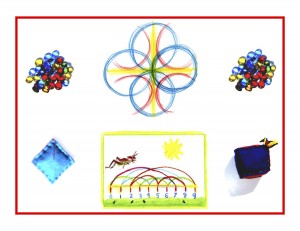Day 146
For one year, 365 days, this blog will address the Common Core Standards from the perspective of creating an alternate, ambient learning environment for math. Ambient is defined as “existing or present on all sides, an all-encompassing atmosphere.” And ambient music is defined as: “Quiet and relaxing with melodies that repeat many times.
Why ambient? A math teaching style that’s whole and all encompassing, with themes that repeat many times through the years, is most likely to be effective and successful. Today’s post will begin reviewing the Common Core ELA standards, moving through them more quickly than the Common Core math standards. The standards will be posted in groups of three to five in blue, followed by their ambient counterparts.
English Language Arts Standards > Reading: Literature > Grade 2
Integration of Knowledge and Ideas:
CCSS.ELA-LITERACY.RL.2.7
Use information gained from the illustration and words in a print or digital text to demonstrate understanding of its characters, setting, or plot.
(RL.2.8 is not applicable to literature)
CCSS.ELA-LITERACY.RL.2.9
Compare and contrast two or more versions of the same story (e.g., Cinderella stories) by different authors or from different cultures.
Range of Reading and Level of Text Complexity:
CCSS.ELA-LITERACY.RL.2.10
By the end of the year, read and comprehend literature, including stories and poetry, in the grades 2-3 text complexity band proficiently, with scaffolding as needed at the high end of the range.
Though in the Waldorf system independent reading has most likely not yet happened, the level of literature comprehension and understanding is that much greater, since grade level limitations are lifted. Both the fables and legends are illustrated and captioned after being told and retold. A deep sense of these elements of literature: characters, setting, and plot, is gradually gained through exposure, but are not taught abstractly as yet. The stories are also coordinated with academics. See below for another example of how fables and tables can be a wonderful mix.
The fables are recognized as a unique genre and it can easily be seen that their nature is not altered across cultural lines. If fables are taken from various cultures, this sort of compare and contrast happens quite naturally, though not yet abstracted or intellectualized. Reading independently is not the be-all end-all after all. It can happen quite naturally, and will if it’s allowed to ripen in its own time. In the meantime, a tremendous respect for and love of literature’s cultural foundations resonates, deeply and meaningfully. Reading will happen! Trust and faith in the teacher, the child, and the subject matter carries the day.
The fable The Dog and His Bone, with its image of mirroring and reflection, is a wonderful fit with the 11’s table. Here, the bone and its reflection becomes the “twin numbers” of the table. It’s also recommended that the concept be experienced with props before putting it on paper as a drawing. (Note that special compensation is made for the 11 x 10, 11, and 12.) This is an excellent example of allowing knowledge to ensue rather than be pursued. Knowledge ensues in an environment dedicated to imaginative, creative knowing, where student and teacher alike surrender to the ensuing of knowledge as a worthy goal. Tune in tomorrow to continue with the Common Core ELA standards and their ambient counterparts.













